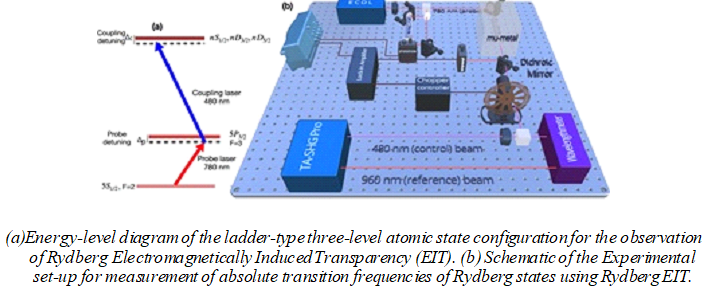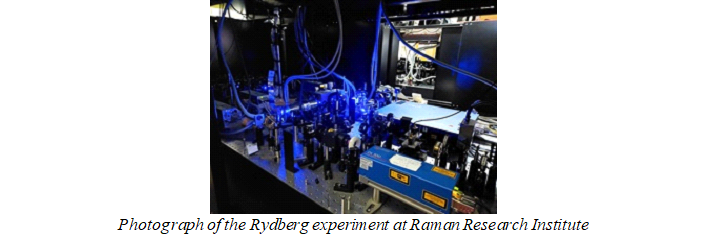Scientists have performed precision measurements of transition frequencies of highly excited Rydberg states, providing a framework for preparing ideal candidates for quantum information processing as well as for atomic sensor technologies.
Rydberg atoms, named after Swedish physicist Johannes Robert Rydberg is a highly excitef atom with exotic properties, including an exaggerated response to electric and electromagnetic fields, including visible light, micro-waves, and radio-frequency waves. With one or more electrons that have a very high principal quantum number , they offer a unique platform for the reliable implementation of scalable quantum information processing due to their strong inter-atomic dipole-dipole interactions.
The highly controllable long-range interactions between Rydberg atoms make them excellent atomic building blocks for quantum technologies and scalable quantum information networks as well as single-photon sources for secure quantum communications. Large values of polarizability and longer lifetimes make highly excited Rydberg atoms ideal candidates for precision electrometry and digital communication, as well as offering a versatile platform for novel atomic sensor technologies.
Earlier, a systematic and accurate measurement of the absolute transition frequencies was available only up to the principal quantum number n around 60. However, the knowledge of the accurate values of absolute transition frequencies to the highly excited Rydberg states beyond this was required to access their extraordinary characteristics for experiments on quantum technologies.
The Researchers from Raman Research Institute (RRI), an autonomous Institute of the Department of Science and Technology (DST) who, have recently started a research program on ‘Quantum Technologies with Rydberg atoms’ excited Rubidium atoms to the Rydberg states using two-photon excitation in a ladder-type of a three-level atomic system. The specific technique used for this measurement is called Rydberg Electromagnetically Induced Transparency (EIT). The researchers used Rydberg EIT in a three-level ladder-type system of Rubidium for the measurement of the transition frequencies to Rydberg states.



In the research published in the journal Optics Continuum, the absolute transition frequencies of atoms to highly excited Rydberg states in Rubidium with high principal quantum numbers (upto n =124) were measured with high precision. The Quantum defects for the Rydberg states and Ionisation energy were also accurately determined from the measurements. This work was led by Sanjukta Roy and Saptarishi Chaudhuri and coauthored by Ph.D. students Silpa B S and Shovan Kanti Barik from RRI.
These measurements would provide a framework for Rydberg excitation to highly excited Rydberg states in atomic clouds at very low temperatures as well as in arrays of individual Rydberg atoms trapped in optical tweezers. Such cold atom systems with long-lived coherence are an ideal toolbox for quantum information processing. This research would be useful for the accurate identification
Publication details: https://doi.org/10.1364/OPTCON.458153
For more details, Sanjukta Roy (sanjukta[at]rri[dot]res[dot]in) can be contacted.






























